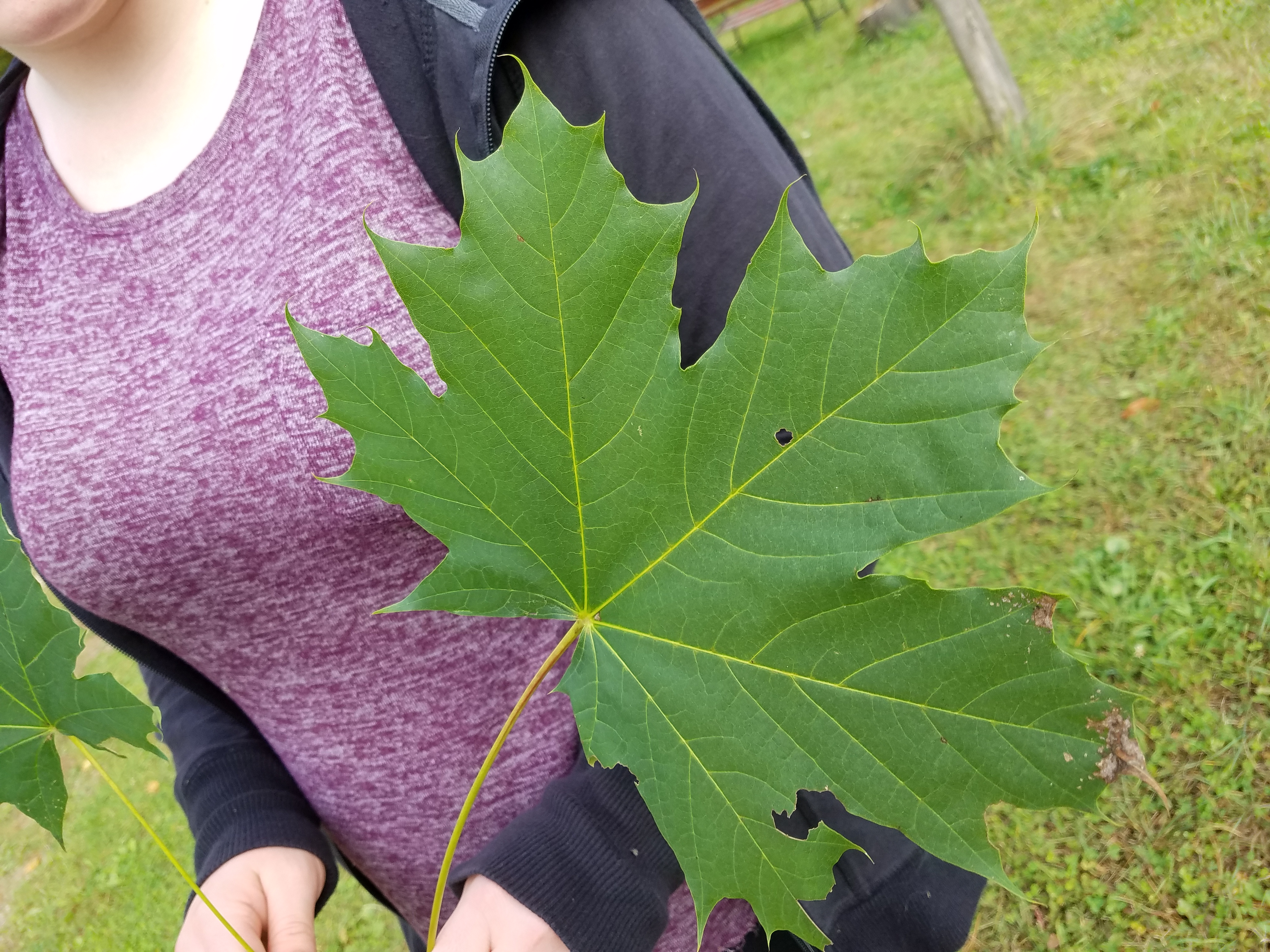
Norway Maple Acer Platanoides Hardy in Zones 3-7 H 60' Spread 50'
Diameter 1-2 foot
Habitat. It prefers rich, well drained soil but can
grow almost anywhere. A round headed, dense tree that grows fast.
Leaves. Opposite, 5-7" long, simple, Dense dark green foliage, similar to sugar
maple leaves but has more leaf teeth. Best test of a Norway maple is to crush a
leafstalk to get the milky sap. Bright yellow fall color and holds leaves longer
than sugar maple.
Flower. Norway maples have large bright yellow-green flowers
that pop out
in May to June in flat clusters..
Fruit. The fruit 1 3/4" ripens in the fall with the
typical whirlybirds. Has the widest spread of all maples on seed pods. Shaped
like a recurved bow.
Winter Buds. Buds are large, 3/16", rounded, blunt,
dark brown on gray brown twigs.
Bark. The bark is distinctively different from Sugar
maple, young it is faintly striped, older it has a slight look of ash bark.
Wood. The wood is hard, heavy, closed grained with
white sapwood. It is good firewood.
Uses. Lumped with sugar maple when at the sawmill.
Pests. Does not get Maple decline as Sugars do but is
susceptible to tar spots and leaf scorch though neither disease is fatal. Can
get verticillium wilt.
Distribution. Native of Europe and is considered
invasive in many of the eastern states.
Other. Of the 13 maples native to North America
Michigan is fortunate to have 7 that are native. One that is not is the Norway
Maple. A favorite street and park tree and gives dense shade. Easy to transplant
but watch for splitting of the bark caused by warm winter day followed by cold
temps. Paint the trunk with white latex paint till the bark gets thicker.
| |
 |
|
|
| |
Summer Color |
|
|
|